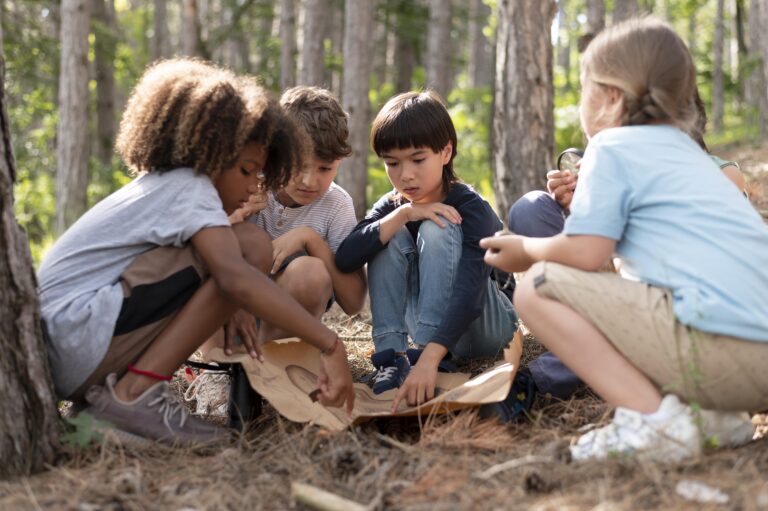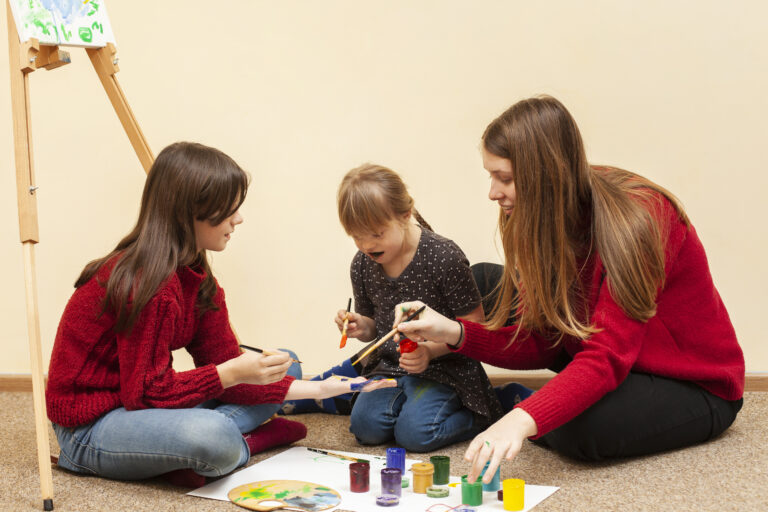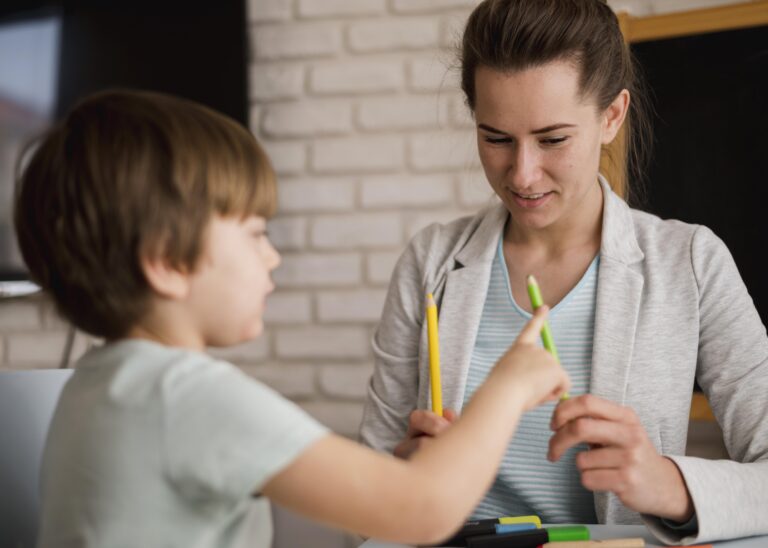How Schools for Autism Foster Social Skills Through Structured Group Activities
Social skills are crucial for every child, but for children with autism, developing those connections often takes a different approach—one that requires intention, patience, and structure. In schools dedicated to children on the autism spectrum, social development is not treated as a bonus; it’s embedded in the very foundation of learning. Building connections, understanding emotions, and engaging in shared experiences all play significant roles in the overall development and well-being of autistic students.
For many students with autism, group interactions can feel unpredictable or overwhelming. That’s where structured group activities step in, transforming chaos into comfort. Guided routines like “Sharing Time,” “The Name Game,” and group storytelling are not just fun ways to pass time in a classroom—they are powerful tools that scaffold communication, build confidence, and offer students meaningful ways to connect with their peers.
In this post, we’ll explore how these activities function, the benefits they offer, and how schools for autism craft environments where every child can thrive socially, emotionally, and academically.
An Intentional Approach to Social Development in Autism Education
Children on the autism spectrum often navigate the world in unique ways. Many face challenges with understanding social cues, initiating conversations, or taking part in cooperative play. Unstructured social situations, which many neurotypical students handle naturally, can be a significant source of anxiety or confusion for autistic children.
These everyday challenges, however, are not deficits—they are simply differences in communication and interaction, which can be nurtured through guided practice. Specialized schools for autism recognize the importance of consistent, supported opportunities for social learning. Structure, predictability, and visual reinforcement are central to creating an environment where these students can flourish.
That’s why structured group activities are so valuable. Unlike spontaneous or free-form group play, these activities are carefully designed with visual reminders, routine formats, and built-in supports. They give students a safe stage on which to gradually build their social muscles, one exchange at a time.
“Sharing Time”: Expressing Interests and Practicing Empathy
In many early childhood and elementary classrooms, “Sharing Time” or “Show and Tell” is a familiar morning routine. But in classroom settings tailored to the needs of autistic learners, this simple group activity becomes a dynamic tool for social development.
Here’s how it works: Each student brings an object or idea—maybe a favorite toy, snack, picture, or book—to share with the class. One at a time, students are invited to speak (or use a communication device or drawing) while peers listen. The activity includes set rules, visual cues, a predictable format, and teacher guidance.
For children with autism, this structure provides the clarity they often need to feel secure. They’re not just speaking randomly in front of an unpredictable group—they’re participating in a carefully scaffolded experience that provides comfort through routine. Over time, the benefits become clear:
- Students learn turn-taking and respectful listening.
- They gain opportunities to express personal interests, which are often rich and passionate in autistic individuals.
- Peers begin learning about one another’s preferences, fostering empathy and common ground.
- Through the repetition of this weekly (or daily) routine, students recognize that they, too, are contributors to their classroom community.
Some children might use visuals or AAC (Augmentative and Alternative Communication) devices to participate. For example, a non-speaking student might show a photo of a family pet during Sharing Time and press a button on their tablet to say, “This is my dog.” Peers then ask questions or make connections—even if only through shared smiles or gestures.
This regular group practice strengthens the bond between students, promoting a culture of inclusion and appreciation for each person’s unique voice and perspective.
The “Name Game”: Laying the Groundwork for Social Success
Knowing the names of people around us is the first step in forming relationships. Yet in many cases, children with autism struggle to identify and consistently use the names of peers, simply because the social context of doing so isn’t naturally intuitive. That’s why games centered around names can be incredibly effective and empowering.
In structured Name Game activities, students gather in a circle, and a teacher or facilitator guides the group through a fun name-oriented game. One example might involve a puppet or soft toy being passed around. When a student receives the toy, they say their name and then pass the toy to someone else by name. The supportive script might sound like: “Hi, I’m Jake. I choose Ava!”
There are countless benefits baked into a simple Name Game:
- Students learn to recognize and say peers’ names, promoting a sense of belonging.
- Turn-taking, eye contact, and shared joy are naturally built into the interaction.
- Games typically involve movement, rhythm, and repetition—key tools for increasing engagement and memory recall in autism-friendly settings.
- Teachers can prompt and support students based on their individual communication style, allowing both verbal and nonverbal children to participate comfortably.
Even for students who are non-English speakers or shy, the Name Game gives them visibility and a moment of recognition. As names become familiar, so do faces—and, eventually, friendships.
Group Storytelling: Sparking Imagination, Collaboration, and Communication
While many people think of storytelling as a solo activity, group storytelling is an incredible way to combine social interaction with language development. In autism education, group storytelling often involves prompts, props, and visuals to help guide the narrative, making the process accessible and engaging for all students.
Here’s how it might unfold: The teacher begins with an eye-catching visual—a big picture of a forest, a castle, or a spaceship. Then, each student contributes one part of the story in turn. One child might say, “The dragon flew over the mountain,” while another adds, “He was looking for his shiny red ball!” Suddenly, a collective story begins to emerge.
This activity builds:
- Narrative development and sequencing skills.
- Joint attention and collaborative problem-solving.
- Emotional understanding through co-created characters and events.
- Confidence in verbal expression (or alternative expression forms).
Teachers often use visual supports, sentence starters, or imaginative props (like finger puppets) to help with contributions. If a verbal contribution is hard for a student, they may choose a picture from a board to suggest what happens next in the story, or even act it out with body movement or a puppet.
Group storytelling is also participatory in nature—it teaches that everyone’s voice matters in building something meaningful, much like in friendship and teamwork.
Why These Activities Work
The recurring success of structured group activities in autism-focused schools isn’t accidental. These carefully crafted routines are rooted in best practices for teaching neurodivergent children. Here’s why they are so effective:
- Predictability Equals Safety: Unfamiliar or spontaneous social situations can cause anxiety. Knowing what comes next, who will speak, when it’s their turn, and what the expectations are lowers those stress levels and encourages fuller participation.
- Visual and Physical Supports Build Confidence: With picture boards, schedules, and cue cards available, students can rely on scaffolds that help them when words are hard.
- Reinforcement Is Immediate and Positive: Teachers are quick to celebrate progress with enthusiastic praise, stickers, claps, or verbal affirmations, motivating students to try again.
- Peer Modeling Gives Social Context: Students learn not just from teachers, but from watching peers. In every group, someone models success for someone else.
- Activities Are Adaptable to Individual Strengths: Students who are more musical, artistic, physical, or verbal can contribute in different ways. Structured activities allow students to shine through their strengths while gently stretching their communication zone.
Fostering Peer Bonding and Community
The goal of these group activities isn’t just practicing skills—it’s fostering real, authentic connection. Over time, the quiet student begins tapping a peer on the shoulder during Sharing Time. The child who once fidgeted in the corner during the Name Game now proudly shouts their friend’s name with a smile. These moments become the buds of peer relationships that may continue to blossom in lunchrooms, on the playground, or during hands-on classroom centers.
By practicing together—daily, deliberately, and joyfully—students begin to internalize socially reciprocal behaviors, from shared smiles to exchanged ideas. And just as importantly, they begin feeling that they belong.
The Role of Teachers and Therapists
Behind every successful structured activity is a teacher or therapist who understands each student’s communication profile, sensory needs, and comfort zone. These professionals design activities not as isolated moments of fun, but as stepping stones in a path toward self-regulation, communication, and relationship-building.
They monitor progress, adapt materials, and coach students through challenges. Whether using first-then prompts, reward charts, or visual aids, they ensure that each child has the tools to navigate social interaction with increasing independence and joy.
This support also isn’t static. What begins as a tightly structured, teacher-led activity may, with time, become a peer-led inquiry or collaboration. The slow handoff from external structure to internal initiative is the mark of real progress.
Extending Skills Beyond the Classroom
One of the true strengths of structured group activities is their ability to act as a springboard for generalizing social skills outside the classroom. A child who learns to say a peer’s name in the Name Game might soon yell that same name with excitement at the playground. A student who masters storytelling turn-taking may begin taking conversational turns during lunchtime.
Families often report that these gains carry over into home life. Siblings become playmates once again. Grandparents receive FaceTime stories from their young narrators. And parents finally see their child participate in a birthday party, raise their hand at a community event, or call a cousin by name.
Structured practice in social-emotional learning cultivates confidence and connection that extend far beyond the school walls.
Creating Joyfully Inclusive Schools
At the heart of impactful autism education is the philosophy that every child deserves to be seen, heard, and included—on their terms and in their time. Structured group activities create safe containers for this growth to happen. They give students a chance to connect, to express their ideas, to giggle with others, and to feel the magic of shared human experience.
At It’s a Sensory World!, we believe joyful learning is powerful learning. With the right support systems, thoughtful routines, and a culture of unconditional acceptance, schools can become the place where all students—regardless of ability—find their voice and their people.
ChatGPT said:
If you’re an educator, parent, or specialist looking to strengthen your students’ social development through structured activities, consider this your reminder: simple games, practiced consistently and presented with joy, can unlock deep human potential. Building social skills for kids with special needs starts with these meaningful, everyday interactions that foster connection, confidence, and growth.
Because every child deserves to belong—and every child deserves real friends.
Want to learn more about our inclusive programs? Reach out—we’d love to share more about how we bring learning to life through sensory-based, social-connected education that empowers every student.






